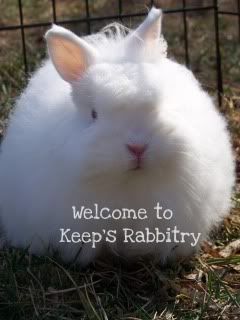It's hard to let go some of those rabbits. You know the ones- that brood doe who throws GCs litter after litter. That buck who seems to be in every pedigree in your barn. The first anything- first GC, first BIS, first RIS, first National winner- it's hard.
Part of building a strong herd is learning when to let an animal go.
Ask yourself some simple questions:
1.) Has that rabbit outproduced itself? This one serves a two part purpose. If the rabbit has outproduced itself, move it on. You have better now. If it hasn't, consider how many litters you've had out of it. If a buck has been bred to every doe in your barn and hasn't outproduced himself, he never will. Why continue to breed him and take a step back in your program? The same goes for does.
2.) Am I using that animal? Too often I've blinked and realized I have a buck that is two years old, but for one reason or another, I've never used him- or only used him once. If you find yourself passing over animals time and time again in favor of breeding others, move them out. They are doing no good sitting in a cage.
3.) Do they contribute enough to the herd? Maybe you have a doe that is hard to breed- she throws once baby at a time, and only catches one out of every three breedings or so. Is she worth keeping in your herd? I don't know about you, but I have a limited number of holes. I prefer to keep does that pull their weight by kindling several kits at time and that breed easily. Same with bucks- lazy or picky breeders drive me NUTS.
4.) How old are they? A lot of breeders try to move out does by 2 1/2 years old. This isn't a bad practice to have, because again- by this age, they should have either outproduced themselves, or shown that they never are going to do so. Let them go.
5.) How many do you have? This is one I am terrible about. If you have a forty hole rabbitry and 10 shaded senior bucks, something is wrong. (I'm looking at myself here.) Line them up and identify your bottom three (at least). If you have seven better bucks in the same color group, why are you keeping those bottom ones? Identify if it is for sentimental reasons or not- then let them go! Even #8, #9 & #10 may be very nice animals that can help someone else's herd. You don't need so many in the same class.
So there you go- hopefully this helps you identify where you can make cuts in your herd and open up some cage space!
-Kristen
Tuesday, August 27, 2013
Subscribe to:
Posts (Atom)

